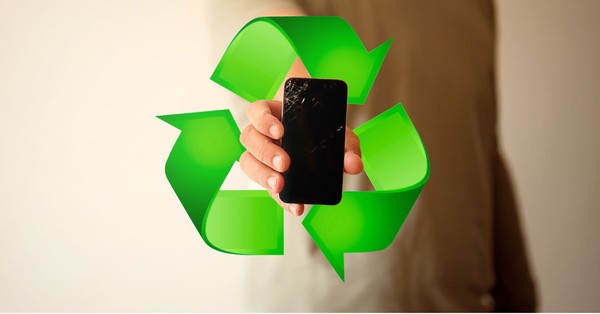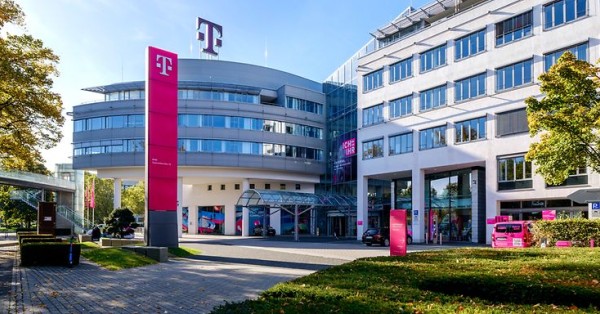Deutsche Telekom device circularity and recycling push
Germany’s largest operator is turning e-waste into engagement currency with a take-back drive that mixes material recovery with headline incentives.
Turning idle devices into an urban mine
Deutsche Telekom estimates 195 million unused phones are sitting idle in Germany, locking up valuable materials and ESG progress. The company is reframing those devices as an urban mine—rich in gold, copper, and critical minerals—and as a lever to scale circularity ahead of its 2030 ambition to make all IT and network technology, and most end-user devices, recyclable or reusable. By the end of 2024, the operator had already taken back more than 11 million phones across the group, building the logistics, grading, and partner ecosystem needed for a broader circular model.
How the device take-back campaign works
Until 15 November, customers who bring old phones to Telekom shops receive a prize-draw entry per device (up to ten entries), with the participation code generated in the My Magenta app. The top prize is a one-kilogram bar of recycled gold, backed by additional rewards such as football trips, VIP tickets, and merchandise vouchers. Each smartphone handed in also triggers a donation to the “Ein Herz für Kinder” charity. The campaign is open to customers in Germany; employees of Deutsche Telekom and its subsidiaries are excluded.
Beyond phones: router and CPE take-back
Deutsche Telekom has expanded its take-back programs to include modems, routers, repeaters, and TV receivers. By the close of 2024 it had collected more than 4.6 million such devices across the group, with 1.35 million reconditioned for reuse in Germany. This matters because network and CPE hardware represent a meaningful slice of Scope 3 emissions and capex; refurbishing and redeploying these devices increases asset turns and reduces procurement and waste costs.
Why device circularity matters for operators and enterprises
The initiative blends ESG delivery, cost avoidance, and brand differentiation while aligning to tightening EU policy and investor expectations.
ESG impact and supply chain resilience
High take-back rates directly reduce end-of-life Scope 3 emissions and support Extended Producer Responsibility under Europe’s WEEE regime. The approach hedges commodity risk by recovering precious metals and critical materials into secondary supply chains. It also supports upcoming disclosure and audit demands under frameworks such as the Corporate Sustainability Reporting Directive by making circularity measurable and repeatable.
Customer data protection and certified data erasure
At-scale device recovery lives or dies on data protection. Operators should evidence chain-of-custody, certified data erasure to NIST SP 800-88 standards, and processing by R2v3 or e‑Stewards certified partners to meet GDPR and procurement requirements. Clear privacy assurances will raise participation rates and de-risk returns from enterprise fleets.
Market context, EU policy, and benchmarks
Telekom’s gold headline is a fresh take on an industry-wide pivot to circular device lifecycles.
EU WEEE, eco-design, and Right to Repair drivers
EU WEEE rules, eco-design policies, and Right to Repair measures are pushing higher recovery, repairability, and recyclability. Deutsche Telekom also co-founded the Eco Rating initiative with Orange, Telefónica, Telia, and Vodafone, signaling a broader operator alignment on product sustainability. The new campaign extends that stance from labeling to actual end-of-life capture.
Operator trade-in and refurb competition
Vodafone, Orange, and Telefónica/O2 run active trade-in and refurb programs; in North America, AT&T, T-Mobile US, and Verizon use aggressive credits to reclaim devices. Deutsche Telekom’s gambit adds lottery-like appeal to dormant-phone recovery, targeting devices that sit outside traditional trade-in value propositions and lifting total collection volume.
Execution risks in device take-back
Incentives can unlock returns fast, but they also introduce operational and market risks that need managing.
Incentive design without trade-in cannibalization
Prize draws should complement, not replace, cash trade-in and buyback offers for high-value devices. Clear segmentation—lottery for “drawer phones,” guaranteed value for recent models—avoids cannibalizing recommerce margins. Caps on entries, as Telekom applies, help control cost per recovered unit.
Partner capacity and secondary-market management
Spikes in volume can strain grading, data erasure, and refurbishment throughput. Operators should pre-book capacity with certified recyclers and refurbishers, diversify resale channels, and monitor secondary-market price indices to maintain recovery economics. Transparent downstream tracking prevents non-compliant exports and reputational risk.
Next steps for telecoms and enterprises
Telecom leaders and enterprise buyers can use this moment to operationalize circularity and secure measurable ROI.
Guidance for telecom operators
Blend eye-catching incentives with always-on trade-in to widen the funnel and smooth volumes across the year. Build closed-loop pathways that route refurb-grade devices back into rental or insurance replacement pools and feed recovered metals into OEM supply contracts. Embed NIST-grade data erasure, provide certificates at device level, and surface metrics in customer portals. Tie marketing to fan communities and charities to convert awareness into store traffic and app usage.
Guidance for enterprises and public sector device owners
Consolidate mobile and CPE returns through take-back partners that issue auditable erasure and recycling certificates. Bake circularity clauses into RFPs—minimum refurbishment rates, R2v3/e‑Stewards compliance, and material recovery targets. Translate recovered value into TCO by offsetting future device procurement and claiming ESG gains in CSRD reporting.
KPIs to track for device circularity
Measure both environmental outcomes and commercial impact to validate the model.
Circularity metrics to monitor
Track collection rate versus installed base, share refurbished versus recycled, material recovery yields for gold and copper, time-to-redeployment for CPE, and percentage of closed-loop materials re-entering new products or network gear.
Customer engagement metrics to monitor
Monitor My Magenta code downloads, average devices per participant, store conversion, campaign-driven NPS movement, and cost per recovered device versus lifetime value from refurbished sales or avoided capex.
Outlook for device circularity programs
Expect incentive-led take-back to become a recurring playbook as circularity moves from pilot to P&L lever.
From headline stunt to standard practice
The gold bar grabs attention, but the durable value is higher recovery, lower embodied-carbon intensity, and better capex efficiency across devices and network assets. If Deutsche Telekom sustains momentum toward its 2030 target, the next phase will be tighter OEM integration for closed-loop materials, more enterprise-grade take-back offers, and deeper reporting that links circular outcomes to financial performance.








































